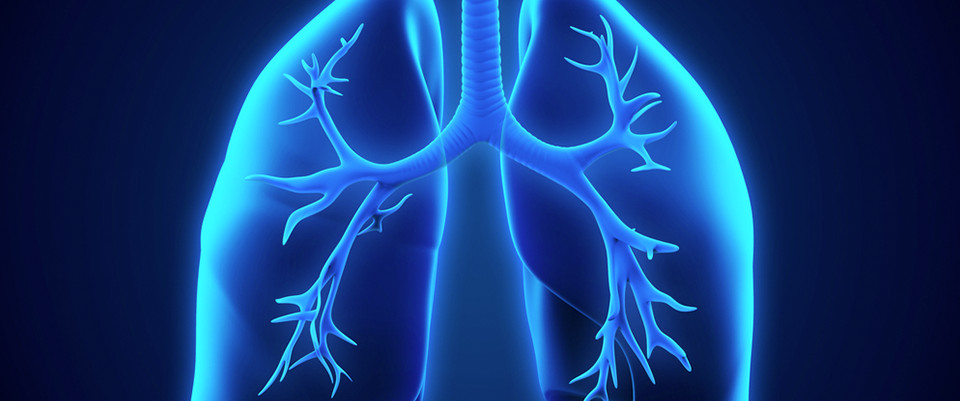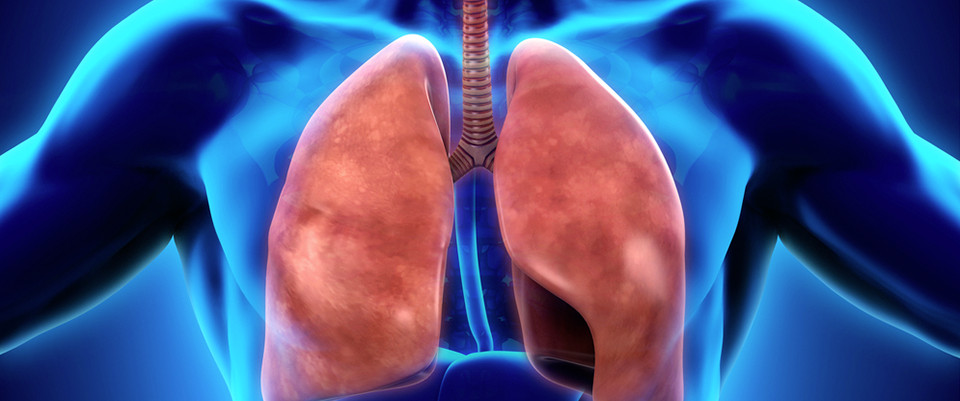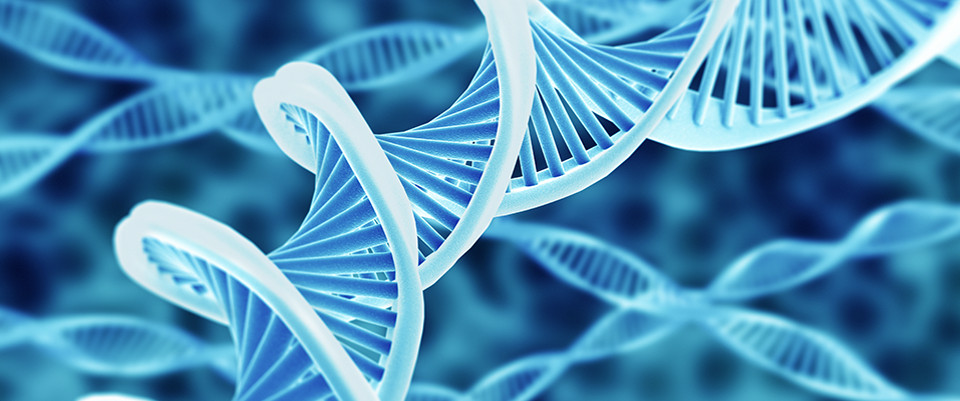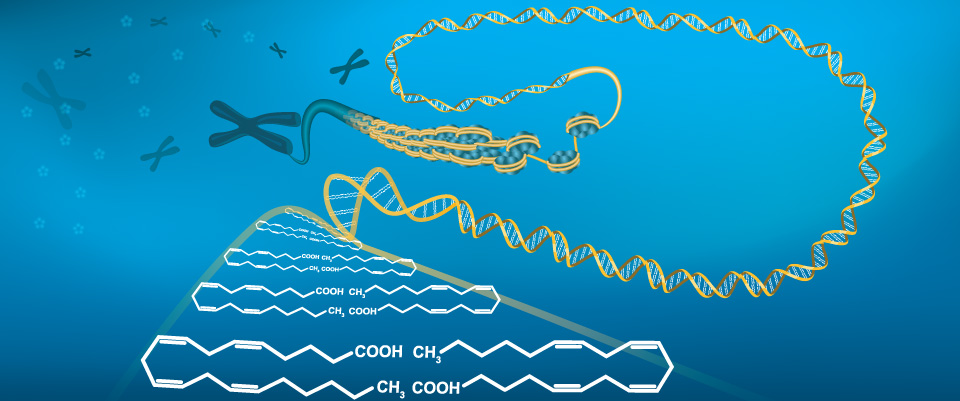PubMed
Energy Metabolism Disorder as a Contributing Factor of Rheumatoid Arthritis: A Comparative Proteomic and Metabolomic Study.
Energy Metabolism Disorder as a Contributing Factor of Rheumatoid Arthritis: A Comparative Proteomic and Metabolomic Study.
PLoS One. 2015;10(7):e0132695
Authors: Yang XY, Zheng KD, Lin K, Zheng G, Zou H, Wang JM, Lin YY, Chuka CM, Ge RS, Zhai W, Wang JG
Abstract
OBJECTIVES: To explore the pathogenesis of rheumatoid arthritis (RA), the different metabolites were screened in synovial fluid by metabolomics.
METHODS: Synovial fluid from 25 RA patients and 10 normal subjects were analyzed by GC/TOF MS analysis so as to give a broad overview of synovial fluid metabolites. The metabolic profiles of RA patients and normal subjects were compared using multivariate statistical analysis. Different proteins were verified by qPCR and western blot. Different metabolites were verified by colorimetric assay kit in 25 inactive RA patients, 25 active RA patients and 20 normal subjects. The influence of hypoxia-inducible factor (HIF)-1α pathway on catabolism was detected by HIF-1α knockdown.
RESULTS: A subset of 58 metabolites was identified, in which the concentrations of 7 metabolites related to energy metabolism were significantly different as shown by importance in the projection (VIP) (VIP≥1) and Student's t-test (p<0.05). In the 7 metabolites, the concentration of glucose was decreased, and the concentration of lactic acid was increased in the synovial fluid of RA patients than normal subjects verified by colorimetric assay Kit. Receiver operator characteristic (ROC) analysis shows that the concentration of glucose and lactic acid in synovial fluid could be used as dependable biomarkers for the diagnosis of active RA, provided an AUC of 0.906 and 0.922. Sensitivity and specificity, which were determined by cut-off points, reached 84% and 96% in sensitivity and 95% and 85% in specificity, respectively. The verification of different proteins identified in our previous proteomic study shows that the enzymes of anaerobic catabolism were up-regulated (PFKP and LDHA), and the enzymes of aerobic oxidation and fatty acid oxidation were down-regulated (CS, DLST, PGD, ACSL4, ACADVL and HADHA) in RA patients. The expression of HIF-1α and the enzymes of aerobic oxidation and fatty acid oxidation were decreased and the enzymes of anaerobic catabolism were increased in FLS cells after HIF-1α knockdown.
CONCLUSION: It was found that enhanced anaerobic catabolism and reduced aerobic oxidation regulated by HIF pathway are newly recognized factors contributing to the progression of RA, and low glucose and high lactic acid concentration in synovial fluid may be the potential biomarker of RA.
PMID: 26147000 [PubMed - as supplied by publisher]
First-Trimester Serum Acylcarnitine Levels to Predict Preeclampsia: A Metabolomics Approach.
First-Trimester Serum Acylcarnitine Levels to Predict Preeclampsia: A Metabolomics Approach.
Dis Markers. 2015;2015:857108
Authors: Koster MP, Vreeken RJ, Harms AC, Dane AD, Kuc S, Schielen PC, Hankemeier T, Berger R, Visser GH, Pennings JL
Abstract
Objective. To expand the search for preeclampsia (PE) metabolomics biomarkers through the analysis of acylcarnitines in first-trimester maternal serum. Methods. This was a nested case-control study using serum from pregnant women, drawn between 8 and 14 weeks of gestational age. Metabolites were measured using an UPLC-MS/MS based method. Concentrations were compared between controls (n = 500) and early-onset- (EO-) PE (n = 68) or late-onset- (LO-) PE (n = 99) women. Metabolites with a false discovery rate <10% for both EO-PE and LO-PE were selected and added to prediction models based on maternal characteristics (MC), mean arterial pressure (MAP), and previously established biomarkers (PAPPA, PLGF, and taurine). Results. Twelve metabolites were significantly different between EO-PE women and controls, with effect levels between -18% and 29%. For LO-PE, 11 metabolites were significantly different with effect sizes between -8% and 24%. Nine metabolites were significantly different for both comparisons. The best prediction model for EO-PE consisted of MC, MAP, PAPPA, PLGF, taurine, and stearoylcarnitine (AUC = 0.784). The best prediction model for LO-PE consisted of MC, MAP, PAPPA, PLGF, and stearoylcarnitine (AUC = 0.700). Conclusion. This study identified stearoylcarnitine as a novel metabolomics biomarker for EO-PE and LO-PE. Nevertheless, metabolomics-based assays for predicting PE are not yet suitable for clinical implementation.
PMID: 26146448 [PubMed - as supplied by publisher]
What was old is new again: using the host response to diagnose infectious disease.
What was old is new again: using the host response to diagnose infectious disease.
Expert Rev Mol Diagn. 2015 Jul 4;:1-16
Authors: Ko ER, Yang WE, McClain MT, Woods CW, Ginsburg GS, Tsalik EL
Abstract
A century of advances in infectious disease diagnosis and treatment changed the face of medicine. However, challenges continue to develop including multi-drug resistance, globalization that increases pandemic risks and high mortality from severe infections. These challenges can be mitigated through improved diagnostics, focusing on both pathogen discovery and the host response. Here, we review how 'omics' technologies improve sepsis diagnosis, early pathogen identification and personalize therapy. Such host response diagnostics are possible due to the confluence of advanced laboratory techniques (e.g., transcriptomics, metabolomics, proteomics) along with advanced mathematical modeling such as machine learning techniques. The road ahead is promising, but obstacles remain before the impact of such advanced diagnostic modalities is felt at the bedside.
PMID: 26145249 [PubMed - as supplied by publisher]
Ferroptosis in p53-dependent oncosuppression and organismal homeostasis.
Ferroptosis in p53-dependent oncosuppression and organismal homeostasis.
Cell Death Differ. 2015 Aug;22(8):1237-8
Authors: Galluzzi L, Bravo-San Pedro JM, Kroemer G
PMID: 26143748 [PubMed - in process]
Application of CE-MS to a metabonomics study of human urine from cigarette smokers and non-smokers.
Related Articles
Application of CE-MS to a metabonomics study of human urine from cigarette smokers and non-smokers.
Bioanalysis. 2014 Oct;6(20):2733-49
Authors: Garcia-Perez I, Lindon JC, Minet E
Abstract
BACKGROUND: Novel biomarkers of exposure and early adverse effects are needed for comparative studies of combustible and non-combustible tobacco products for regulatory authority evaluation. Metabolic biomarkers reflect both gene and environmental effects.
RESULTS: CE-MS has been applied to human urine samples from non-smokers and smokers of cigarettes at two tar levels. Validated chemometric models were able to separate smokers from non-smokers, with discrimination mainly based on the presence of nicotine metabolites. With these removed, it still proved possible to discriminate smokers from non-smokers with models now based on endogenous metabolites. The biochemical relevance of these biomarkers is discussed.
CONCLUSION: This proof-of-principle metabonomics study illustrates the potential of CE-MS to discover novel biomarkers in urine from tobacco users.
PMID: 25413705 [PubMed - indexed for MEDLINE]
An integrated "omics" approach to the characterization of maize (Zea mays L.) mutants deficient in the expression of two genes encoding cytosolic glutamine synthetase.
Related Articles
An integrated "omics" approach to the characterization of maize (Zea mays L.) mutants deficient in the expression of two genes encoding cytosolic glutamine synthetase.
BMC Genomics. 2014;15:1005
Authors: Amiour N, Imbaud S, Clément G, Agier N, Zivy M, Valot B, Balliau T, Quilleré I, Tercé-Laforgue T, Dargel-Graffin C, Hirel B
Abstract
BACKGROUND: To identify the key elements controlling grain production in maize, it is essential to have an integrated view of the responses to alterations in the main steps of nitrogen assimilation by modification of gene expression. Two maize mutant lines (gln1.3 and gln1.4), deficient in two genes encoding cytosolic glutamine synthetase, a key enzyme involved in nitrogen assimilation, were previously characterized by a reduction of kernel size in the gln1.4 mutant and by a reduction of kernel number in the gln1.3 mutant. In this work, the differences in leaf gene transcripts, proteins and metabolite accumulation in gln1.3 and gln1.4 mutants were studied at two key stages of plant development, in order to identify putative candidate genes, proteins and metabolic pathways contributing on one hand to the control of plant development and on the other to grain production.
RESULTS: The most interesting finding in this study is that a number of key plant processes were altered in the gln1.3 and gln1.4 mutants, including a number of major biological processes such as carbon metabolism and transport, cell wall metabolism, and several metabolic pathways and stress responsive and regulatory elements. We also found that the two mutants share common or specific characteristics across at least two or even three of the "omics" considered at the vegetative stage of plant development, or during the grain filling period.
CONCLUSIONS: This is the first comprehensive molecular and physiological characterization of two cytosolic glutamine synthetase maize mutants using a combined transcriptomic, proteomic and metabolomic approach. We find that the integration of the three "omics" procedures is not straight forward, since developmental and mutant-specific levels of regulation seem to occur from gene expression to metabolite accumulation. However, their potential use is discussed with a view to improving our understanding of nitrogen assimilation and partitioning and its impact on grain production.
PMID: 25410248 [PubMed - indexed for MEDLINE]
Roles of rhizobial symbionts in selenium hyperaccumulation in Astragalus (Fabaceae).
Related Articles
Roles of rhizobial symbionts in selenium hyperaccumulation in Astragalus (Fabaceae).
Am J Bot. 2014 Nov;101(11):1895-905
Authors: Alford ÉR, Lindblom SD, Pittarello M, Freeman JL, Fakra SC, Marcus MA, Broeckling C, Pilon-Smits EA, Paschke MW
Abstract
PREMISE OF THE STUDY: Are there dimensions of symbiotic root interactions that are overlooked because plant mineral nutrition is the foundation and, perhaps too often, the sole explanation through which we view these relationships? In this paper we investigate how the root nodule symbiosis in selenium (Se) hyperaccumulator and nonaccumulator Astragalus species influences plant selenium (Se) accumulation.
METHODS: In greenhouse studies, Se was added to nodulated and nonnodulated hyperaccumulator and nonaccumulator Astragalus plants, followed by investigation of nitrogen (N)-Se relationships. Selenium speciation was also investigated, using x-ray microprobe analysis and liquid chromatography-mass spectrometry (LC-MS).
KEY RESULTS: Nodulation enhanced biomass production and Se to S ratio in both hyperaccumulator and nonaccumulator plants. The hyperaccumulator contained more Se when nodulated, while the nonaccumulator contained less S when nodulated. Shoot [Se] was positively correlated with shoot N in Se-hyperaccumulator species, but not in nonhyperaccumulator species. The x-ray microprobe analysis showed that hyperaccumulators contain significantly higher amounts of organic Se than nonhyperaccumulators. LC-MS of A. bisulcatus leaves revealed that nodulated plants contained more γ-glutamyl-methylselenocysteine (γ-Glu-MeSeCys) than nonnodulated plants, while MeSeCys levels were similar.
CONCLUSIONS: Root nodule mutualism positively affects Se hyperaccumulation in Astragalus. The microbial N supply particularly appears to contribute glutamate for the formation of γ-Glu-MeSeCys. Our results provide insight into the significance of symbiotic interactions in plant adaptation to edaphic conditions. Specifically, our findings illustrate that the importance of these relationships are not limited to alleviating macronutrient deficiencies.
PMID: 25366855 [PubMed - indexed for MEDLINE]
Metabolite signatures of exercise training in human skeletal muscle relate to mitochondrial remodelling and cardiometabolic fitness.
Related Articles
Metabolite signatures of exercise training in human skeletal muscle relate to mitochondrial remodelling and cardiometabolic fitness.
Diabetologia. 2014 Nov;57(11):2282-95
Authors: Huffman KM, Koves TR, Hubal MJ, Abouassi H, Beri N, Bateman LA, Stevens RD, Ilkayeva OR, Hoffman EP, Muoio DM, Kraus WE
Abstract
AIMS/HYPOTHESIS: Targeted metabolomic and transcriptomic approaches were used to evaluate the relationship between skeletal muscle metabolite signatures, gene expression profiles and clinical outcomes in response to various exercise training interventions. We hypothesised that changes in mitochondrial metabolic intermediates would predict improvements in clinical risk factors, thereby offering novel insights into potential mechanisms.
METHODS: Subjects at risk of metabolic disease were randomised to 6 months of inactivity or one of five aerobic and/or resistance training programmes (n = 112). Pre/post-intervention assessments included cardiorespiratory fitness ([Formula: see text]), serum triacylglycerols (TGs) and insulin sensitivity (SI). In this secondary analysis, muscle biopsy specimens were used for targeted mass spectrometry-based analysis of metabolic intermediates and measurement of mRNA expression of genes involved in metabolism.
RESULTS: Exercise regimens with the largest energy expenditure produced robust increases in muscle concentrations of even-chain acylcarnitines (median 37-488%), which correlated positively with increased expression of genes involved in muscle uptake and oxidation of fatty acids. Along with free carnitine, the aforementioned acylcarnitine metabolites were related to improvements in [Formula: see text], TGs and SI (R = 0.20-0.31, p < 0.05). Muscle concentrations of the tricarboxylic acid cycle intermediates succinate and succinylcarnitine (R = 0.39 and 0.24, p < 0.05) emerged as the strongest correlates of SI.
CONCLUSIONS/INTERPRETATION: The metabolic signatures of exercise-trained skeletal muscle reflected reprogramming of mitochondrial function and intermediary metabolism and correlated with changes in cardiometabolic fitness. Succinate metabolism and the succinate dehydrogenase complex emerged as a potential regulatory node that intersects with whole-body insulin sensitivity. This study identifies new avenues for mechanistic research aimed at understanding the health benefits of physical activity. Trial registration ClinicalTrials.gov NCT00200993 and NCT00275145 Funding This work was supported by the National Heart, Lung, and Blood Institute (National Institutes of Health), National Institute on Aging (National Institutes of Health) and National Institute of Arthritis and Musculoskeletal and Skin Diseases (National Institutes of Health).
PMID: 25091629 [PubMed - indexed for MEDLINE]
Immune infiltrate in cancer.
Immune infiltrate in cancer.
Aging (Albany NY). 2015 Jun 25;
Authors: Stoll G, Zitvogel L, Kroemer G
PMID: 26143478 [PubMed - as supplied by publisher]
Perturbations in fatty acid metabolism and apoptosis are manifested in calcific coronary artery disease: An exploratory lipidomic study.
Perturbations in fatty acid metabolism and apoptosis are manifested in calcific coronary artery disease: An exploratory lipidomic study.
Int J Cardiol. 2015 Jun 23;197:192-199
Authors: Vorkas PA, Isaac G, Holmgren A, Want EJ, Shockcor JP, Holmes E, Henein MY
Abstract
BACKGROUND: Controversy exists concerning the beneficial or harmful effects of the presence of ectopic calcification in the coronary arteries. Additionally, further elucidation of the exact pathophysiological mechanism is needed. In this study, we sought to identify metabolic markers of vascular calcification that could assist in understanding the disease, monitoring its progress and generating hypotheses describing its pathophysiology.
METHODS: Untargeted lipid profiling and complementary modeling strategies were employed to compare serum samples from patients with different levels of calcific coronary artery disease (CCAD) based on their calcium score (CS). Subsequently, patients were divided into three groups: no calcification (NC; CS=0; n=26), mild calcification (MC; CS:1-250; n=27) and severe (SC; CS>250; n=17).
RESULTS: Phosphatidylcholine levels were found to be significantly altered in the disease states (p=0.001-0.04). Specifically, 18-carbon fatty acyl chain (FAC) phosphatidylcholines were detected in lower levels in the SC group, while 20:4 FAC lipid species were detected in higher concentrations. A statistical trend was observed with phosphatidylcholine lipids in the MC group, showing the same tendency as with the SC group. We also observed several sphingomyelin signals present at lower intensities in SC when compared with NC or MC groups (p=0.000001-0.01).
CONCLUSIONS: This is the first lipid profiling study reported in CCAD. Our data demonstrate dysregulations of phosphatidylcholine lipid species, which suggest perturbations in fatty acid elongation/desaturation. The altered levels of the 18-carbon and 20:4 FAC lipids may be indicative of disturbed inflammation homeostasis. The marked sphingomyelin dysregulation in SC is consistent with profound apoptosis as a potential mechanism of CCAD.
PMID: 26142205 [PubMed - as supplied by publisher]
Metabolomics and Natural-Products Strategies to Study Chemical Ecology in Nematodes.
Metabolomics and Natural-Products Strategies to Study Chemical Ecology in Nematodes.
Integr Comp Biol. 2015 Jul 2;
Authors: Edison AS, Clendinen CS, Ajredini R, Beecher C, Ponce FV, Stupp GS
Abstract
This review provides an overview of two complementary approaches to identify biologically active compounds for studies in chemical ecology. The first is activity-guided fractionation and the second is metabolomics, particularly focusing on a new liquid chromatography-mass spectrometry-based method called isotopic ratio outlier analysis. To illustrate examples using these approaches, we review recent experiments using Caenorhabditis elegans and related free-living nematodes.
PMID: 26141866 [PubMed - as supplied by publisher]
Female and male human babies have distinct blood metabolomic patterns.
Female and male human babies have distinct blood metabolomic patterns.
Mol Biosyst. 2015 Jul 3;
Authors: Ruoppolo M, Scolamiero E, Caterino M, Mirisola V, Franconi F, Campesi I
Abstract
A sex-gender approach in laboratory medicine is scarce; furthermore, the influence of sex on acylcarnitines and amino acid levels at birth has not been thoroughly investigated, even if sex impacts on newborn screening. We aimed to establish the influence of sex on amino acids and acylcarnitines levels in male and female newborns. Amino acids and acylcarnitines were analysed in dried blood spots using tandem mass spectrometry in male and female newborns. Data were analysed before and after body weight correction also using principal components analysis. This retrospective analytical study showed that females had small but significantly higher levels of amino acids and the correction for body weight amplified these differences. Acylcarnitines were overall higher in males before body weight correction with the exception of isovalerylcarnitine + methylbutyrylcarnitine (C5), which was significantly higher in females. Body weight correction decreased the sex differences in C5. Principal component analysis showed that both amino acids and acylcarnitines were necessary to describe the model for females, whereas only acylcarnitines were required for males. These metabolomics data underline the importance of including sex as a variable in future investigations of circulating metabolites; the existence of sex differences highlights the need for setting distinct reference values for female and male neonates in metabolite concentration.
PMID: 26140445 [PubMed - as supplied by publisher]
Colorectal cancer: the first neoplasia found to be under immunosurveillance and the last one to respond to immunotherapy?
Colorectal cancer: the first neoplasia found to be under immunosurveillance and the last one to respond to immunotherapy?
Oncoimmunology. 2015 Jul;4(7):e1058597
Authors: Kroemer G, Galluzzi L, Zitvogel L, Fridman WH
Abstract
The first study demonstrating that human colorectal carcinoma (CRC) is under robust immunosurveillance was published a decade ago. Today, it is clear that CRC patients with Stage III lesions abundantly infiltrated by effector memory T cells have a better prognosis than subjects with Stage I neoplasms exhibiting no or poor immune infiltration. Thus, immunological parameters have a superior prognostic value for CRC patients than TNM staging or the Dukes classification. In spite of the fact that CRC is the first neoplasia found to be under immunological control, most attempts made so far to cure this malignancy with immunotherapy have failed. With the exception of a minority of lesions characterized by microsatellite instability (MSI), CRC seems to be insensitive to the blockade of immunological checkpoints with monoclonal antibodies (mAbs) specific for cytotoxic T lymphocyte-associated protein 4 (CTLA4), programmed cell death 1 (PDCD1, best known as PD-1) and the PD-1 ligand CD274 (best known as PD-L1). Thus, CRC stands in contrast with an increasing number of malignancies that respond to checkpoint blockers. Efforts should therefore be dedicated to the development of strategies to (re)instate immunosurveillance in patients with MSI(-) CRC, perhaps based on the identification of novel, locally relevant immunological checkpoints.
PMID: 26140250 [PubMed - as supplied by publisher]
Combinatorial immunotherapy with checkpoint blockers solves the problem of metastatic melanoma-An exclamation sign with a question mark.
Combinatorial immunotherapy with checkpoint blockers solves the problem of metastatic melanoma-An exclamation sign with a question mark.
Oncoimmunology. 2015 Jul;4(7):e1058037
Authors: Kroemer G, Galluzzi L
Abstract
Results from recent clinical trials demonstrate that a combinatorial immunotherapeutic regimen based on 2 distinct checkpoint blockers, namely, the CTLA4-targeting agent ipilimumab and the PD-1-specific molecule nivolumab, causes objective responses in a majority of subjects with advanced melanoma. These findings revolutionize the treatment of a neoplasm that was considered incurable until recently. Nonetheless, announcing the defeat of melanoma appears premature. Indeed, a sizeable fraction of patients does not respond to ipilimumab plus nivolumab, and the long-term efficacy of this immunotherapeutic regimen has not yet been investigated. Moreover, many patients experience severe side effects, calling for the development of strategies that uncouple the efficacy of ipilimumab plus nivolumab from their toxicity.
PMID: 26140249 [PubMed - as supplied by publisher]
Liver fat deposition and mitochondrial dysfunction in morbid obesity: An approach combining metabolomics with liver imaging and histology.
Liver fat deposition and mitochondrial dysfunction in morbid obesity: An approach combining metabolomics with liver imaging and histology.
World J Gastroenterol. 2015 Jun 28;21(24):7529-44
Authors: Calvo N, Beltrán-Debón R, Rodríguez-Gallego E, Hernández-Aguilera A, Guirro M, Mariné-Casadó R, Millá L, Alegret JM, Sabench F, Del Castillo D, Vinaixa M, Rodríguez MÀ, Correig X, García-Álvarez R, Menendez JA, Camps J, Joven J
Abstract
AIM: To explore the usefulness of magnetic resonance imaging (MRI) and spectroscopy (MRS) for assessment of non-alcoholic fat liver disease (NAFLD) as compared with liver histological and metabolomics findings.
METHODS: Patients undergoing bariatric surgery following procedures involved in laparoscopic sleeve gastrectomy were recruited as a model of obesity-induced NAFLD in an observational, prospective, single-site, cross-sectional study with a pre-set duration of 1 year. Relevant data were obtained prospectively and surrogates for inflammation, oxidative stress and lipid and glucose metabolism were obtained through standard laboratory measurements. To provide reliable data from MRI and MRS, novel procedures were designed to limit sampling variability and other sources of error using a 1.5T Signa HDx scanner and protocols acquired from the 3D or 2D Fat SAT FIESTA prescription manager. We used our previously described (1)H NMR-based metabolomics assays. Data were obtained immediately before surgery and after a 12-mo period including histology of the liver and measurement of metabolites. Values from (1)H NMR spectra obtained after surgery were omitted due to technical limitations.
RESULTS: MRI data showed excellent correlation with the concentration of liver triglycerides, other hepatic lipid components and the histological assessment, which excluded the presence of non-alcoholic steatohepatitis (NASH). MRI was sufficient to follow up NAFLD in obese patients undergoing bariatric surgery and data suggest usefulness in other clinical situations. The information provided by MRS replicated that obtained by MRI using the -CH3 peak (0.9 ppm), the -CH2- peak (1.3 ppm, mostly triglyceride) and the -CH=CH- peak (2.2 ppm). No patient depicted NASH. After surgery all patients significantly decreased their body weight and steatosis was virtually absent even in patients with previous severe disease. Improvement was also observed in the serum concentrations of selected variables. The most relevant findings using metabolomics indicate increased levels of triglyceride and monounsaturated fatty acids in severe steatosis but those results were accompanied by a significant depletion of diglycerides, polyunsaturated fatty acids, glucose-6-phosphate and the ATP/AMP ratio. Combined data indicated the coordinated action on mitochondrial fat oxidation and glucose transport activity and may support the consideration of NAFLD as a likely mitochondrial disease. This concept may help to explain the dissociation between excess lipid storage in adipose tissue and NAFLD and may direct the search for plasma biomarkers and novel therapeutic strategies. A limitation of our study is that data were obtained in a relatively low number of patients.
CONCLUSION: MRI is sufficient to stage NAFLD in obese patients and to assess the improvement after bariatric surgery. Other data were superfluous for this purpose.
PMID: 26140000 [PubMed - in process]
Microbiota Metabolite Regulation of Host Immune Homeostasis: A Mechanistic Missing Link.
Microbiota Metabolite Regulation of Host Immune Homeostasis: A Mechanistic Missing Link.
Curr Allergy Asthma Rep. 2015 May;15(5):524
Authors: Steinmeyer S, Lee K, Jayaraman A, Alaniz RC
Abstract
Metazoans predominantly co-exist with symbiotic microorganisms called the microbiota. Metagenomic surveys of the microbiota reveal a diverse ecosystem of microbes particularly in the gastrointestinal (GI) tract. Perturbations in the GI microbiota in higher mammals (i.e., humans) are linked to diseases with variegated symptomology including inflammatory bowel disease, asthma, and auto-inflammatory disorders. Indeed, studies using germ-free mice (lacking a microbiota) confirm that host development and homeostasis are dependent on the microbiota. A long-known key feature of the GI tract microbiota is metabolizing host indigestible dietary matter for maximum energy extraction; however, host signaling pathways are greatly influenced by the microbiota as well. In line with these observations, recent research has revealed that metabolites produced strictly by select microbiota members are mechanistic regulators of host cell functions. In this review, we discuss two major classes of microbiota-produced metabolites: short-chain fatty acids and tryptophan metabolites. We describe the known important roles for these metabolites in shaping host immunity and comment on the current status and future directions for microbiota metabolomics research.
PMID: 26139332 [PubMed - in process]
Effect of Kidney Function on Drug Kinetics and Dosing in Neonates, Infants, and Children.
Effect of Kidney Function on Drug Kinetics and Dosing in Neonates, Infants, and Children.
Clin Pharmacokinet. 2015 Jul 3;
Authors: Rodieux F, Wilbaux M, van den Anker JN, Pfister M
Abstract
Neonates, infants, and children differ from adults in many aspects, not just in age, weight, and body composition. Growth, maturation and environmental factors affect drug kinetics, response and dosing in pediatric patients. Almost 80 % of drugs have not been studied in children, and dosing of these drugs is derived from adult doses by adjusting for body weight/size. As developmental and maturational changes are complex processes, such simplified methods may result in subtherapeutic effects or adverse events. Kidney function is impaired during the first 2 years of life as a result of normal growth and development. Reduced kidney function during childhood has an impact not only on renal clearance but also on absorption, distribution, metabolism and nonrenal clearance of drugs. 'Omics'-based technologies, such as proteomics and metabolomics, can be leveraged to uncover novel markers for kidney function during normal development, acute kidney injury, and chronic diseases. Pharmacometric modeling and simulation can be applied to simplify the design of pediatric investigations, characterize the effects of kidney function on drug exposure and response, and fine-tune dosing in pediatric patients, especially in those with impaired kidney function. One case study of amikacin dosing in neonates with reduced kidney function is presented. Collaborative efforts between clinicians and scientists in academia, industry, and regulatory agencies are required to evaluate new renal biomarkers, collect and share prospective pharmacokinetic, genetic and clinical data, build integrated pharmacometric models for key drugs, optimize and standardize dosing strategies, develop bedside decision tools, and enhance labels of drugs utilized in neonates, infants, and children.
PMID: 26138291 [PubMed - as supplied by publisher]
[Chinmedomics: a new strategy for research of traditional Chinese medicine].
[Chinmedomics: a new strategy for research of traditional Chinese medicine].
Zhongguo Zhong Yao Za Zhi. 2015 Feb;40(4):569-76
Authors: Zhang AH, Sun H, Yan GL, Wang P, Han Y, Wang XJ
Abstract
Syndrome and formulae (or prescription) are two key issues in traditional Chinese medicine (TCM) and the premise research for material basis of TCM. However, vagueness of syndromes and complexity of formulae greatly limited the evaluation to syndromes and effective substance basis of prescription. Therefore, how to solve the evaluation of syndromes, confirming the efficacy material basis in prescription are the current hot issues of international concern. To solve these problems, establishing chinmedomics by integrated serum pharmacochemistry of TCM with metabolomics technology, that is a unique method of TCM research, made outstanding contributions in solving international concerns such as the effectiveness and security aspects of TCM. On the basis of the biological characterization of syndrome, the metabolic profiling of animal models of TCM syndrome, and related metabolic fingerprints as well as metabolic biomarkers were established to evaluate the overall effects of TCM formulae and corresponding relationship of syndrome-formulae. The active constituents were screened using the plotting of correlation between (endogenous) marker metabolites and (exogenous) serum constituents (PCMS), and is ongoing verification by further biological experiments. Correlation analysis between the ingredients in the body after oral formulae and endogenous markers in vivo can be used to clarify the active ingredients and synergistic properties. This method was successfully applied for rapid discovery of potentially bioactive components and metabolites from TCM, and through a series of studies on the chinmedomics, it proved that the established method could help to explore the effective substance for further research of TCM. As a new research approach, Chinmedomics is the best method to fit the holistic concept of TCM, and it can not only interpret the essence of syndrome but also elucidate the scientific connotation of Chinese medical formulae.
PMID: 26137671 [PubMed - in process]
Progress and challenges in developing metabolic footprints from diet in human gut microbial cometabolism.
Related Articles
Progress and challenges in developing metabolic footprints from diet in human gut microbial cometabolism.
J Nutr. 2015 May;145(5):1123S-1130S
Authors: Duffy LC, Raiten DJ, Hubbard VS, Starke-Reed P
Abstract
Homo sapiens harbor trillions of microbes, whose microbial metagenome (collective genome of a microbial community) using omic validation interrogation tools is estimated to be at least 100-fold that of human cells, which comprise 23,000 genes. This article highlights some of the current progress and open questions in nutrition-related areas of microbiome research. It also underscores the metabolic capabilities of microbial fermentation on nutritional substrates that require further mechanistic understanding and systems biology approaches of studying functional interactions between diet composition, gut microbiota, and host metabolism. Questions surrounding bacterial fermentation and degradation of dietary constituents (particularly by Firmicutes and Bacteroidetes) and deciphering how microbial encoding of enzymes and derived metabolites affect recovery of dietary energy by the host are more complex than previously thought. Moreover, it is essential to understand to what extent the intestinal microbiota is subject to dietary control and to integrate these data with functional metabolic signatures and biomarkers. Many lines of research have demonstrated the significant role of the gut microbiota in human physiology and disease. Probiotic and prebiotic products are proliferating in the market in response to consumer demand, and the science and technology around these products are progressing rapidly. With high-throughput molecular technologies driving the science, studying the bidirectional interactions of host-microbial cometabolism, epithelial cell maturation, shaping of innate immune development, normal vs. dysfunctional nutrient absorption and processing, and the complex signaling pathways involved is now possible. Substantiating the safety and mechanisms of action of probiotic/prebiotic formulations is critical. Beneficial modulation of the human microbiota by using these nutritional and biotherapeutic strategies holds considerable promise as next-generation drugs, vaccinomics, and metabolic agents and in novel food discovery.
PMID: 25833886 [PubMed - indexed for MEDLINE]
Data integration reveals key homeostatic mechanisms following low dose radiation exposure.
Related Articles
Data integration reveals key homeostatic mechanisms following low dose radiation exposure.
Toxicol Appl Pharmacol. 2015 May 15;285(1):1-11
Authors: Tilton SC, Matzke MM, Sowa MB, Stenoien DL, Weber TJ, Morgan WF, Waters KM
Abstract
The goal of this study was to define pathways regulated by low dose radiation to understand how biological systems respond to subtle perturbations in their environment and prioritize pathways for human health assessment. Using an in vitro 3-D human full thickness skin model, we have examined the temporal response of dermal and epidermal layers to 10 cGy X-ray using transcriptomic, proteomic, phosphoproteomic and metabolomic platforms. Bioinformatics analysis of each dataset independently revealed potential signaling mechanisms affected by low dose radiation, and integrating data shed additional insight into the mechanisms regulating low dose responses in human tissue. We examined direct interactions among datasets (top down approach) and defined several hubs as significant regulators, including transcription factors (YY1, MYC and CREB1), kinases (CDK2, PLK1) and a protease (MMP2). These data indicate a shift in response across time - with an increase in DNA repair, tissue remodeling and repression of cell proliferation acutely (24-72h). Pathway-based integration (bottom up approach) identified common molecular and pathway responses to low dose radiation, including oxidative stress, nitric oxide signaling and transcriptional regulation through the SP1 factor that would not have been identified by the individual data sets. Significant regulation of key downstream metabolites of nitrative stress was measured within these pathways. Among the features identified in our study, the regulation of MMP2 and SP1 was experimentally validated. Our results demonstrate the advantage of data integration to broadly define the pathways and networks that represent the mechanisms by which complex biological systems respond to perturbation.
PMID: 25655199 [PubMed - indexed for MEDLINE]











